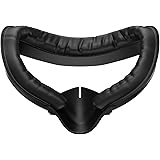Have you ever found yourself immersed in a game, only to think, “If only I could control this with something truly unique?” Perhaps a racing game where a miniature steering wheel attached to your existing controller could transform the experience, or an old favorite title needing the tactile feedback of a classic joystick. The pursuit of an unparalleled gaming experience often drives enthusiasts beyond the confines of off-the-shelf peripherals, leading to some truly innovative controller modifications. As the video above brilliantly illustrates, the world of gaming hardware is a vast playground for those with a knack for engineering and a passion for personalized play.
This deep dive explores the fascinating realm where ingenuity meets gaming, showcasing how dedicated modders are constantly pushing the boundaries of what a game controller can be. We delve into the technical underpinnings, the creative spark, and the sheer dedication required to transform ordinary devices into extraordinary tools. From practical enhancements to audacious experimental setups, these custom controller mods not only redefine gameplay but also highlight the vibrant, innovative spirit of the gaming community.
The Evolution of Gaming Peripherals: Beyond Stock Controllers
The journey of gaming controllers, from simplistic joysticks to ergonomically complex modern devices, has always been dictated by technological advancements and player demands. However, stock controllers, despite their sophisticated design, rarely cater to every specific niche or idiosyncratic preference. Here, the modding community steps in, bridging the gap between mass-produced hardware and bespoke gaming dreams. These ingenious modifications often highlight pathways for future official products, demonstrating consumer desires for greater personalization and functionality.
For instance, the advent of affordable 3D printing has democratized hardware customization, allowing individuals to fabricate specialized components with relative ease. This accessibility means that a concept, once relegated to industrial design labs, can now be prototyped and iterated upon in a home workshop. Consequently, the barrier to entry for aspiring controller modders has significantly lowered, fostering a rich environment for innovation and diverse designs.
Rapid Prototyping and Ergonomic Innovations through 3D Printing
The synergy between gaming and 3D printing is exceptionally compelling, particularly when considering ergonomic enhancements and specialized inputs. The video spotlights a miniature Xbox One steering wheel from Pixel2, which ingeniously repurposes a fidget spinner’s bearings to add rotational movement to an analog stick. This modification, while perhaps impractical for competitive play, exemplifies how existing objects can be cleverly integrated into new designs, creating novel haptic feedback for simulated driving experiences.
Conversely, the practicality of 3D printing shines through in designs aimed at improving accessibility and comfort. The single Joy-Con grips designed by Manabun, for example, transform an inherently awkward solo controller into a far more comfortable and usable device. Similarly, the one-handed Joy-Con adapter is a testament to the modding community’s commitment to inclusivity, providing a simple yet profound solution for gamers with limited mobility. These designs, easily printable from publicly available specs, offer critical enhancements that major manufacturers have yet to fully embrace, thereby empowering a wider demographic of players.
Beyond the Console: Interfacing Controllers with Real-World Systems
While most controller modifications focus on enhancing the gaming experience itself, some projects transcend the virtual realm entirely, demonstrating the incredible versatility of these input devices. The concept of using a PlayStation 4 controller to drive a fully functional car might sound like science fiction, yet engineers have successfully demonstrated this capability. This achievement is not merely a party trick; it illustrates advanced principles of remote control and input mapping that have significant applications in fields beyond entertainment.
Truthfully, the core technology behind this feat—inserting a driving rig and broadcasting commands—is a refined version of systems used in various professional settings. Miniature remote-controlled vehicles are a popular hobby, and controlling life-size vehicles remotely is commonplace on movie sets for stunt work. This mod, however, captures the imagination by utilizing a familiar gaming peripheral, effectively bridging the gap between everyday technology and complex engineering. It begs the question of future applications, perhaps controlling sophisticated robotics or advanced drones with the intuitive interface of a gaming controller.
Cross-System Compatibility: A Modder’s Endeavor for Seamless Gaming
The desire to use a beloved controller across different gaming platforms is a recurring theme in the modding community, driven by nostalgia and a preference for specific ergonomic designs. Modders frequently embark on projects to bypass the native input restrictions of consoles, allowing vintage or favored controllers to interact with modern systems. This often involves intricate rewiring, custom firmware development, and sophisticated input remapping to translate the signals effectively.
Shank Mods’ creation of GameCube Joy-Cons stands as a monumental achievement in this category, transforming the iconic WaveBird controller into a pair of fully functional Nintendo Switch Joy-Cons. This project was far more than a simple aesthetic swap; it required the meticulous integration of wireless communication hardware and the addition of new buttons to match contemporary control schemes. Similarly, Hyperkin’s work in adapting an N64 controller for the Xbox One highlights the technical hurdles involved, particularly concerning the limited analog input of older hardware, which can restrict compatibility with modern games designed for dual-stick control schemes.
Likewise, the adaptation of the NES Advantage, an arcade-style controller from 1987, to play Xbox 360 games by Hifeno Drake, speaks volumes about the enduring appeal of retro peripherals. Despite inherent limitations in button count compared to contemporary controllers, these conversions allow a nostalgic bridge to be built between generations of gaming. Such endeavors not only celebrate gaming history but also push the boundaries of hardware interoperability, showcasing the deep technical knowledge within the modding community.
Aesthetic Customization and Performance Enhancements
While many controller mods focus on functional changes, a significant portion of the community dedicates itself to purely aesthetic transformations or subtle performance upgrades. These modifications often reflect a gamer’s personal style, fandom, or a desire for a more premium feel. Devin Smith’s Fallout 4-themed PS4 controller from Endline Designs, with its expertly crafted distressed look and welded decals, exemplifies how visual customization can profoundly deepen a player’s connection to their favorite game world. This isn’t just a controller; it’s a piece of art that embodies the retro-futuristic post-apocalyptic aesthetic of the Fallout universe.
Beyond visual flair, other mods target ergonomic improvements or perceived build quality deficiencies. The Nintendo Pro Elite Controller mod, for instance, addresses the common complaint regarding the Switch Pro controller’s perceived flimsiness compared to the more robust Xbox One Elite controller. By swapping internal components and shells, modders can imbue the Switch Pro with a denser, more tactile feel, enhancing the overall gaming experience. This modification, requiring only basic tools like a Phillips screwdriver and a custom shell, demonstrates that significant improvements can often be achieved through straightforward, user-led upgrades, allowing gamers to truly get the most out of their gaming controller customization.









